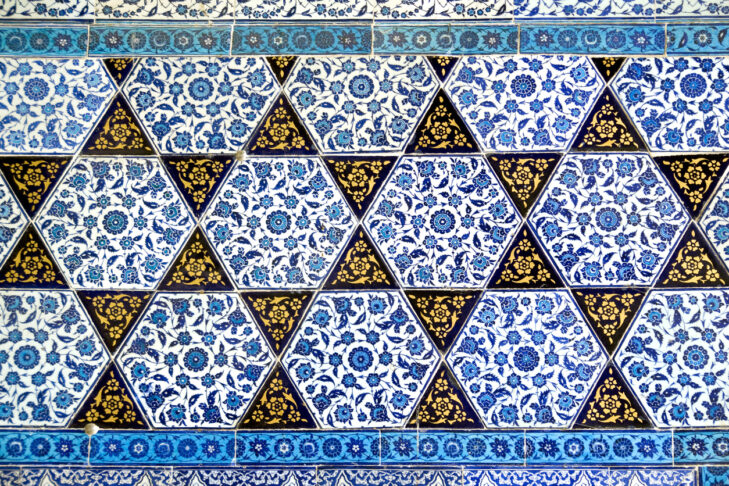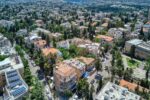
Whenever Jews emigrated to America they had to adapt to new circumstances and often create new identities. Often Jews anglicized names or simplified dietary restrictions. In extreme cases some gave up the practice of Judaism altogether. Many early Jewish immigrants had married and merged into the Christian majority. For most immigrant Jews, however, especially after 1880, changes were considerable but not extreme. Jews tried to balance tradition, which often meant maintaining a status as the “other,” and adopting American appearance, customs, language and beliefs to become one of the “many.” This follows the American motto: E pluribus unum. Assimilation was the expected norm for all immigrants in the United States, but each group found its own way to becoming American.
This talk tracks these changes through the art and architecture made by and for Jews. We’ll track how and when immigrants used new language, new symbols, new images and new styles in art and architecture in order to express their identity as both Jews and Americans. Sometimes the art was two-faced, with one visual language used for the wider world and another within the Jewish community. Are there such examples at the Walnut Street Shul?
About our presenter:
Samuel Gruber is an accomplished researcher, author, curator and consultant, and founder and managing director of Gruber Heritage Global (GHG), a cultural resources consulting firm. He served for a decade as research director of the U.S. Commission for the Preservation of America’s Heritage Abroad, for which he planned and supervised more than a dozen major countrywide cultural heritage surveys. He was founding director of the Jewish Heritage Council of the World Monuments Fund (WMF), for which he planned and oversaw major documentation, planning and restoration projects in many countries. He is presently working on preservation projects in America and Europe. He has curated two online exhibitions for the College of Charleston: “Life of the Synagogue” (2015) and “Synagogues of the South” (2022). He curated the online “Romaniote Memories for Queens College” (2021) and the physical “A Sacred Space: Synagogue Architecture and Identity,” on view at the Jewish Theological Seminary in New York until March 7, 2024. Gruber is president of the not-for-profit international Survey of Jewish Monuments, for which he is presently a lead researcher on the international Holocaust Memorial Monument Database. Gruber received his B.A. in Medieval Studies from Princeton University and his Ph.D. in Architectural History from Columbia University. His many publications include “American Synagogues: A Century of Architecture and Jewish Community” (Rizzoli, 2003) and “Synagogues” (Metrobooks, NY, 1999). He has also co-authored “Synagogues and Mass Graves Sites in Ukraine” (2005); “Survey of Historic Jewish Sites in the Czech Republic” (1995), “Survey of Historic Jewish Sites in Poland” (1994; rev. 1995) and many scholarly and popular articles on medieval architecture, Jewish art and architecture, and historic preservation. Gruber is a Fellow of the American Academy in Rome. Besides his consulting work, he has taught part-time in Jewish studies at Syracuse University since 1994.
This series is made possible by a grant from the Congregation Ahabat Shalom Religious Fund.
+ More... - Less...CJP provides the above links concerning third-party events for your convenience only. CJP has no control over the content of the linked-to websites or events they describe, and accepts no responsibility for the websites, including any advertising or products or services on or available from such sites, or for any loss or damage that may arise from your attending, or registering to attend, the described events. If you decide to access any of the third-party websites linked to below, you do so entirely at your own risk and subject to the terms and conditions of use for such websites and event attendance. CJP is not responsible or liable to you or any third party for the content or accuracy of any materials provided by any third parties. All statements and/or opinions expressed in the linked-to materials or at the described events, and all commentary, articles and other content provided at the third-party websites or at the events, are solely the opinions and the responsibility of the persons or entities operating the linked-to websites and events. The inclusion of any link on this website does not imply that CJP endorses the described event, or the linked-to website or its operator. MORE






































